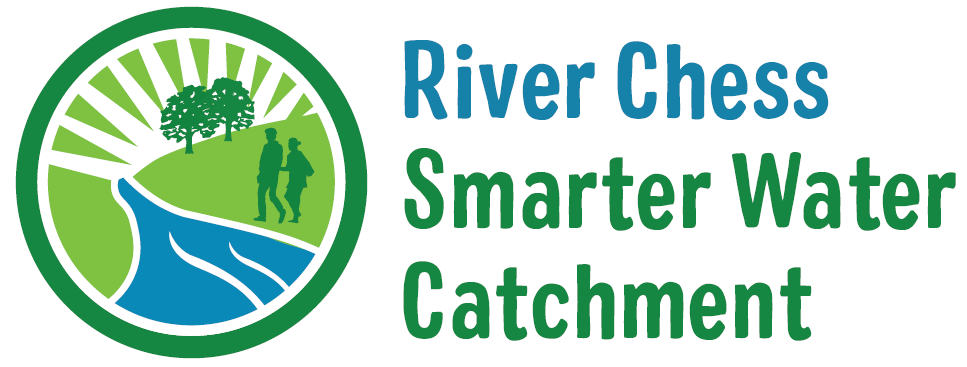
Geology and ecology
Shaped over millennia by natural and human activities, the geology and hydrology of the Chess catchment are intricate and fascinating.
The River Chess catchment is extremely important on both a local and a global scale – it is one of only 283 chalk streams that have been identified in England, which supports the majority of world’s chalk streams. Other habitats in the landscape are also globally scarce, including lowland meadows and chalk grassland, and support rare and threatened wildlife, such as green sandpipers and mayflies.
Rich in wildlife – the geography and biology of the River Chess
Sparkling, clear waters.
The silver flash of a fish.
The loud plop of a water vole going for a swim.
The waving, lush green of watercress below the surface.
The River Chess rises from several sources around Chesham, such as at Pednormead End, and flows for 11 miles through the Chilterns, meeting the River Colne in Rickmansworth. It has a clean gravel bed and crystal-clear, oxygenated waters. Plants like white-flowered water crowfoot grow abundantly in its fast flow, and fish, such as brown trout, lay their eggs in the riverbed. In turn, the river is strongly influenced by the habitats and species within the catchment.
There are a range of different habitats in the Chess catchment, all of which support specialist species:
Chalk streams
These streams are watercourses that flow across chalk bedrock, often fed by underground or seasonal springs. They may have winterbourne headwaters, which run dry in summer. They support a range of specialist wildlife, including water crowfoot and brown trout. Learn more about the chalk streams of the Chilterns.
Lowland meadows and pastures
Shaped by traditional farming methods, such as hay-cutting and grazing, these flower-rich fields near lowland rivers have moist, deep soils that support plants like cuckooflower, oxeye daisy, meadow buttercup and great burnet. In turn, invertebrates are plentiful and wading birds flock to the fields to feed.
Calcareous grassland
This type of grassland is associated with thin, base-rich soils such as those found over chalk and limestone. With a typically short turf, maintained by grazing, the grassland supports important invertebrates, such as the Adonis blue butterfly, and plants, such as orchids. Learn more about Chilterns grasslands and heaths.
Woodlands and hedgerows
Woodlands that existed before the 1600s and are still here today are considered to be ‘ancient’. These places are often carpeted with bluebells and support a range of mammals, birds and invertebrates. Traditional hedgerows were used to divide field boundaries or keep stock in or out. Now, they provide shelter for woodland and field species moving through the landscape, such as hedgehogs and finches.
Farmland and arable field margins
Many years ago, the area around farmed fields, where productivity was low, would have been used to delineate field edges and land ownership. Today, if left unsprayed and uncut, they play an important role in conserving rare arable plants, such as pheasant’s-eye and corncockle. Farmland also supports a wide range of other species, including declining farmland birds like turtle doves and skylarks.

Systems within the River Chess catchment provide a wide range of natural resources – or ‘natural capital’ – including habitats, species and soils. Multiple benefits, or ‘ecosystem services’, arise from this natural capital, helping us to survive and thrive. Plentiful food, clean water, clean air, flood defence, pollination, carbon storage, recreation and health opportunities, and locally distinctive industries are just some of the services we gain from the Chess catchment.
The catchment provides a varied landscape for outdoor activities, such as hiking, fishing, horse riding and cycling.

The river and aquifer have historically provided an important source of drinking water, and supported watercress farms and milling industries.

Locally grown watercress

Visit our River Chess Storymap
Explore the Chess as an environmental system – find out all about the Chess and its catchment. View realtime dashboards showing data on water quality and river flows. Learn about factors affecting the River Chess that come from outside the catchment (land use, transport links, climate change) and those that occur on a catchment scale (such as geology and hydrology).
Rich in geology – the hydrogeological setting of the River Chess
The geology in the River Chess catchment is dominated by White Chalk – a geological subgroup of sedimentary rock that identifies the type of chalk found in the area. Chalk is found in most of Southern England, and extends to East Anglia, Lincolnshire and the Yorkshire coasts. It was formed during the Cretaceous Period, around 100 million years ago, beneath a sub-tropical sea. Soft, white limestone was slowly laid down under this sea as the remains of millions of coccolithophores (microscopic algae) fell to the seabed.
Chalk is incredibly porous, allowing water to soak through it just like a sponge. Because of this, the White Chalk of the Chess catchment and beyond forms the most important aquifer in England. Groundwater soaks into the matrix of the rock and moves through fractures and openings, often at considerable speed – perhaps hundreds of metres per day. In the Chess catchment, water has been abstracted from the underground aquifer for public water supply.
The River Chess itself is groundwater-fed by a combination of springs and artesian boreholes. At these places, water naturally leaves the ground (often via a fracture in the Chalk) and joins the river. The rock filters the water making it clean, pure and a stable temperature. Together with the geomorphology, this means that the river can support rare and specialist species.
Rich in history
Humans and rivers have been inextricably linked over the millennia, and the River Chess is no exception. The River Chess catchment is strewn with reminders of past generations and their connection to the river – from the earliest hunter-gatherers to the artists of today. Find out more about the cultural heritage of the River Chess.









